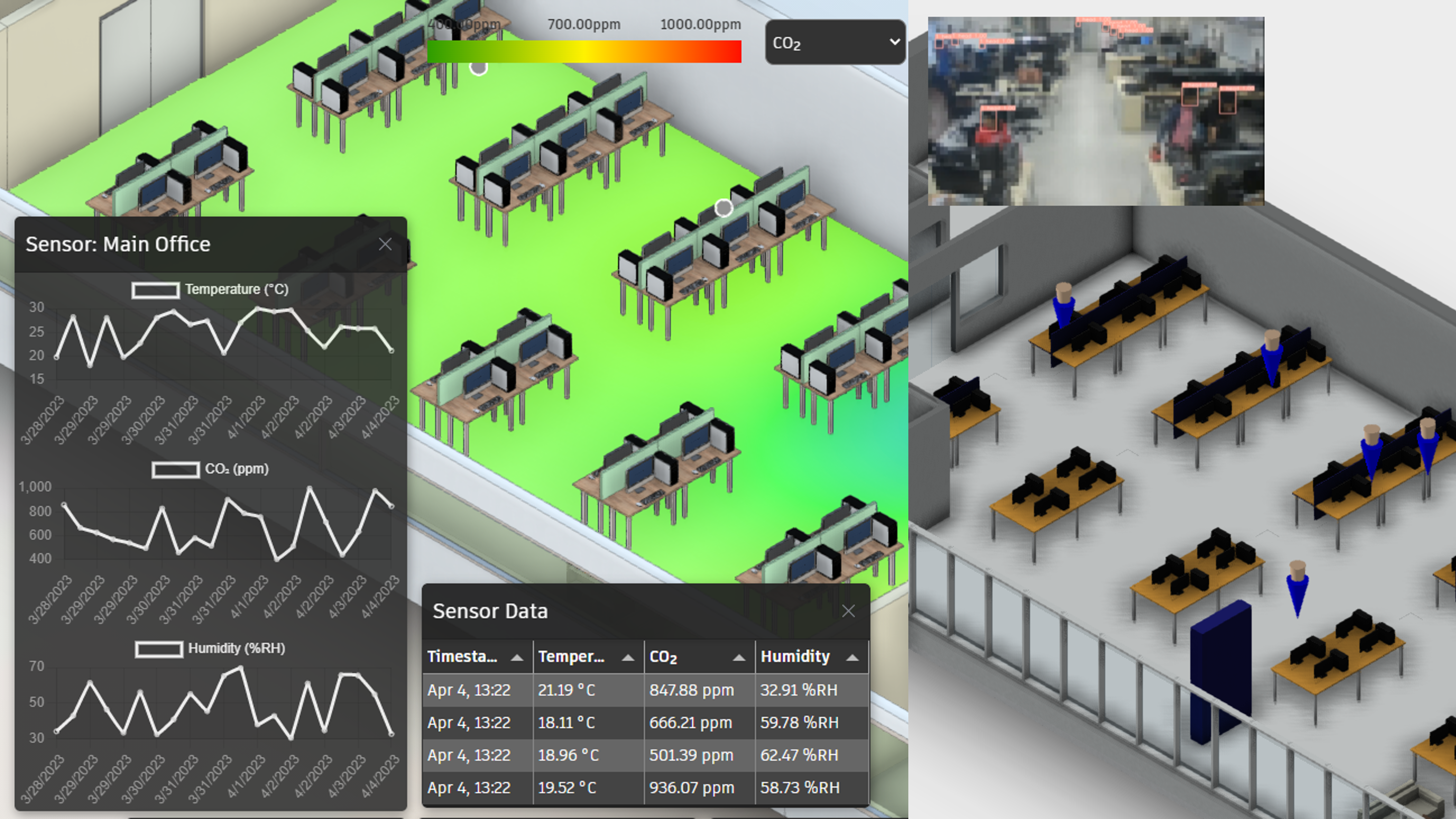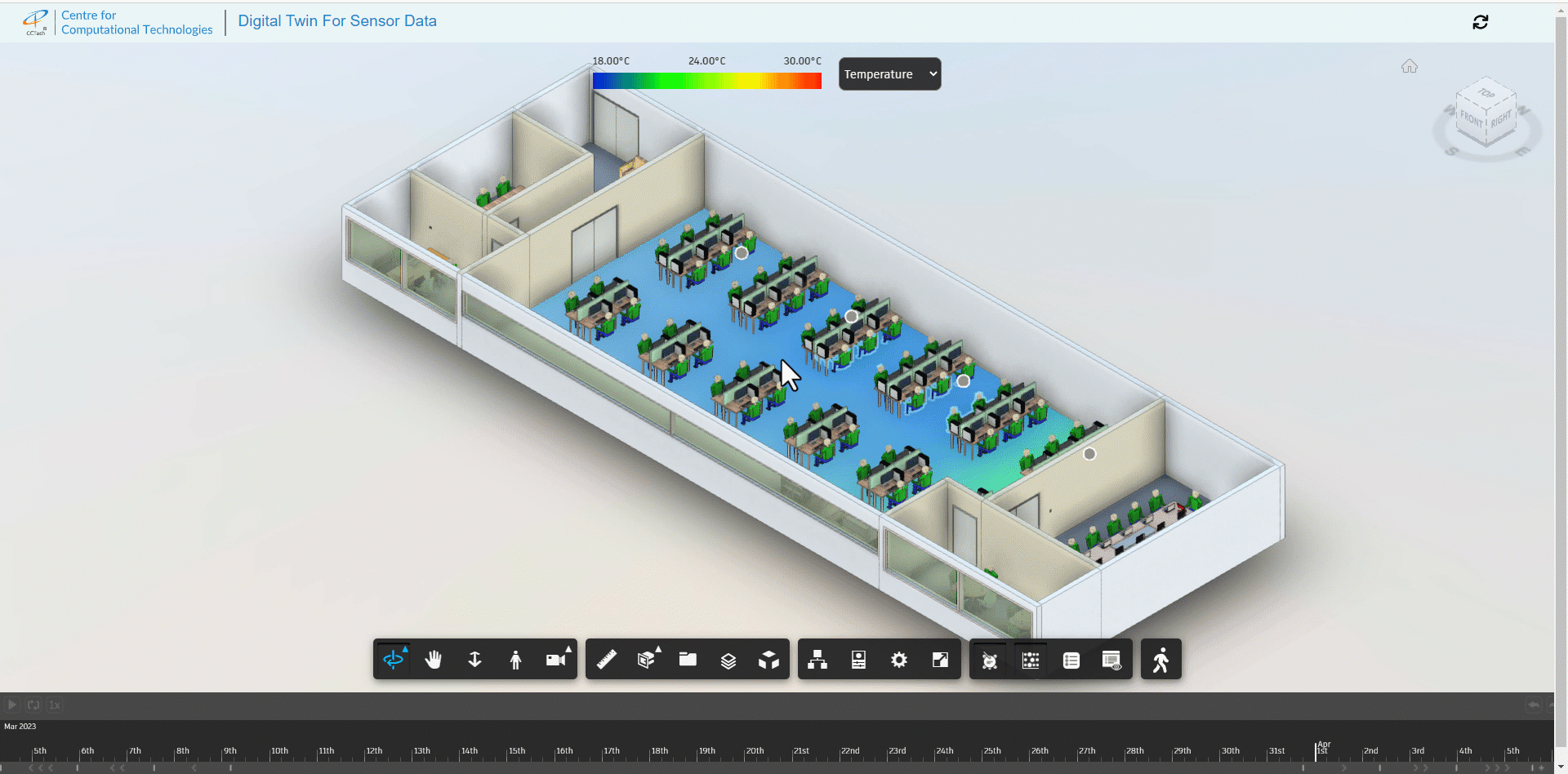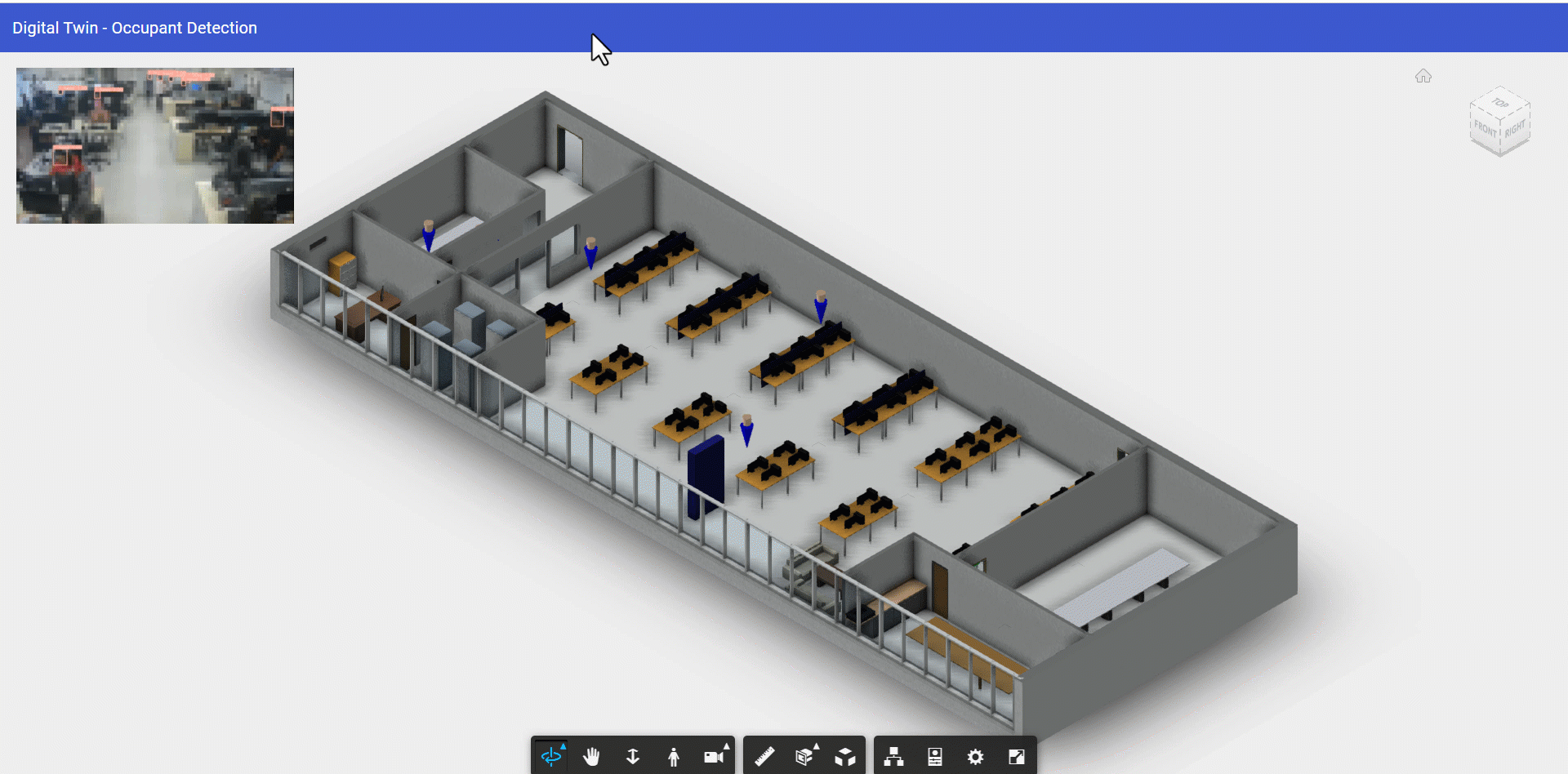Tuesday, April 04, 2023
Revolutionizing Building Management Systems
By
Subhransu Majhi

In modern building management systems (BMS), thermal comfort and energy efficiency are
critical considerations. Automated Heating, Ventilation, and Air Conditioning (HVAC) systems
are often utilized to achieve these objectives. However, such systems’ effectiveness depends
on the accuracy of temperature readings from the thermostat and AHU sensors. Unfortunately,
these sensors do not consider several factors that can impact thermal comfort, such as
changes in heat loads or occupancy.
 Visit the Digital Twin for Sensor Data application
Visit the Digital Twin for Sensor Data application
To address these limitations, BMS systems are often augmented with sensors on equipment and
sun position monitoring capabilities. However, occupancy detection remains a challenge.
Commercial solutions, such as human counting sensors at the entrance, only provide an
overall headcount and do not capture occupant positions or activity levels. As a result,
HVAC systems may over-cool certain areas or underperform in others, leading to poor energy
efficiency.
To overcome these limitations, an AI-based computer vision solution can be developed to
detect occupant positioning and activity. By analyzing CCTV footage, this technology can
provide real-time data on occupant positions and activities, which can be fed into a digital
twin application using APS Viewer and its digital twin extension. This approach can enable
HVAC systems to adjust airflow and temperature distribution based on occupant positions,
leading to optimal thermal comfort and energy efficiency.
 Visit the Digital Twin for Occupant Detection application
Visit the Digital Twin for Occupant Detection application
In summary, while modern BMS systems have made significant strides in automating HVAC
systems, there is still room for improvement. Incorporating AI-based computer vision to
sense occupant positioning and activity levels can lead to more sustainable and comfortable
built spaces. This technology has the potential to revolutionize building management systems
and may become a critical component of future building automation systems.
Comments
Recent posts




